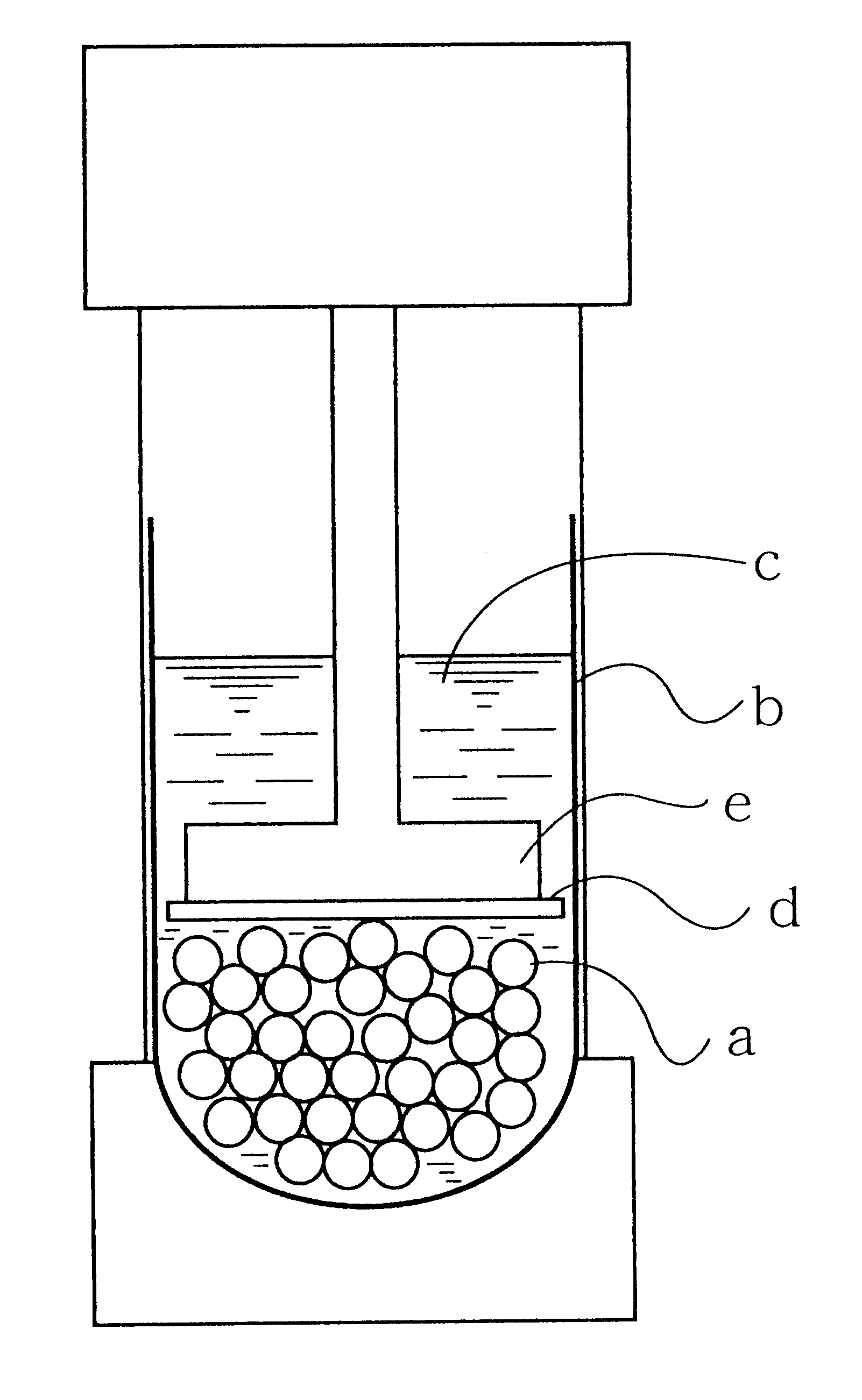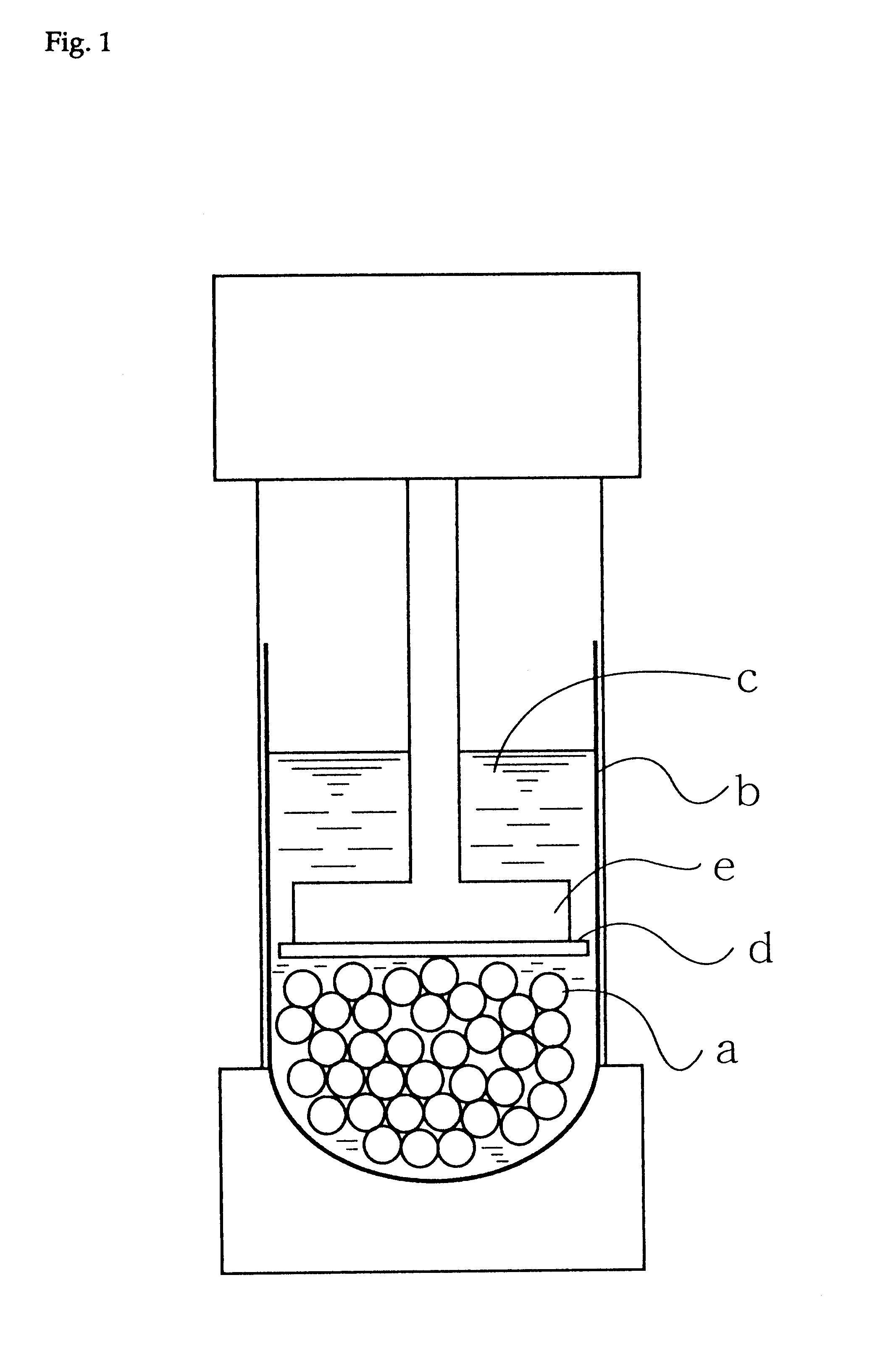Production process for hydrophilic polymer
- Summary
- Abstract
- Description
- Claims
- Application Information
AI Technical Summary
Benefits of technology
Problems solved by technology
Method used
Image
Examples
production example 2
(PRODUCTION EXAMPLE 2)
An aqueous monomer solution, comprising 204 g of acrylic acid, 496 g of sodium acrylate, 1.6 g of polyethylene glycol diacrylate, and 1,286 g of water, was placed into a stainless vat of 220 mm.times.300 mm, and then air in the reaction system was displaced with nitrogen while the temperature of the solution was kept at 20.degree. C. Next, while the aqueous monomer solution was stirred with a magnetic stirrer, thereto 3 g of 5 weight % aqueous V-50 solution, 3 g of 5 weight % aqueous sodium persulfate solution, 3 g of 0.5 weight % aqueous sodium L-ascorbate solution, and 3.5 g of 0.35 weight % aqueous hydrogen peroxide solution were added as polymerization initiators. About 1 minute later than the addition of the polymerization initiators, a polymerization reaction started. The stainless vat was cooled for 20 minutes by immersion into a water bath of 20.degree. C., and then aging was made with warm water of 60.degree. C. for 40 minutes. The resultant polymer ge...
production example 3
(PRODUCTION EXAMPLE 3)
An aqueous monomer solution, comprising 204 g of acrylic acid, 496 g of sodium acrylate, 1.6 g of polyethylene glycol diacrylate, and 1,286 g of water, was placed into a stainless vat of 220 mm.times.300 mm, and then air in the reaction system was displaced with nitrogen while the temperature of the solution was kept at 20.degree. C. Next, while the aqueous monomer solution was stirred with a magnetic stirrer, thereto 3 g of 5 weight % aqueous V-50 solution, 6 g of 5 weight % aqueous sodium persulfate solution, 3 g of 0.5 weight % aqueous sodium L-ascorbate solution, and 3.5 g of 0.35 weight % aqueous hydrogen peroxide solution were added as polymerization initiators. About 1 minute later than the addition of the polymerization initiators, a polymerization reaction started. The stainless vat was cooled for 20 minutes by immersion into a water bath of 20.degree. C., and then aging was made with warm water of 60.degree. C. for 30 minutes. The resultant polymer ge...
production example 4
(PRODUCTION EXAMPLE 4)
An aqueous monomer solution, comprising 204 g of acrylic acid, 496 g of sodium acrylate, 1.6 g of polyethylene glycol diacrylate, and 1,286 g of water, was placed into a stainless vat of 220 mm.times.300 mm, and then air in the reaction system was displaced with nitrogen while the temperature of the solution was kept at 20.degree. C. Next, while the aqueous monomer solution was stirred with a magnetic stirrer, thereto 3 g of 5 weight % aqueous V-50 solution, 9 g of 5 weight % aqueous sodium persulfate solution, 3 g of 0.5 weight % aqueous sodium L-ascorbate solution, and 3.5 g of 0.35 weight % aqueous hydrogen peroxide solution were added as polymerization initiators. About 1 minute later than the addition of the polymerization initiators, a polymerization reaction started. The stainless vat was cooled for 20 minutes by immersion into a water bath of 20.degree. C., and then aging was made with warm water of 60.degree. C. for 30 minutes. The resultant polymer ge...
PUM
| Property | Measurement | Unit |
|---|---|---|
| Temperature | aaaaa | aaaaa |
| Temperature | aaaaa | aaaaa |
| Fraction | aaaaa | aaaaa |
Abstract
Description
Claims
Application Information
 Login to View More
Login to View More - R&D
- Intellectual Property
- Life Sciences
- Materials
- Tech Scout
- Unparalleled Data Quality
- Higher Quality Content
- 60% Fewer Hallucinations
Browse by: Latest US Patents, China's latest patents, Technical Efficacy Thesaurus, Application Domain, Technology Topic, Popular Technical Reports.
© 2025 PatSnap. All rights reserved.Legal|Privacy policy|Modern Slavery Act Transparency Statement|Sitemap|About US| Contact US: help@patsnap.com


